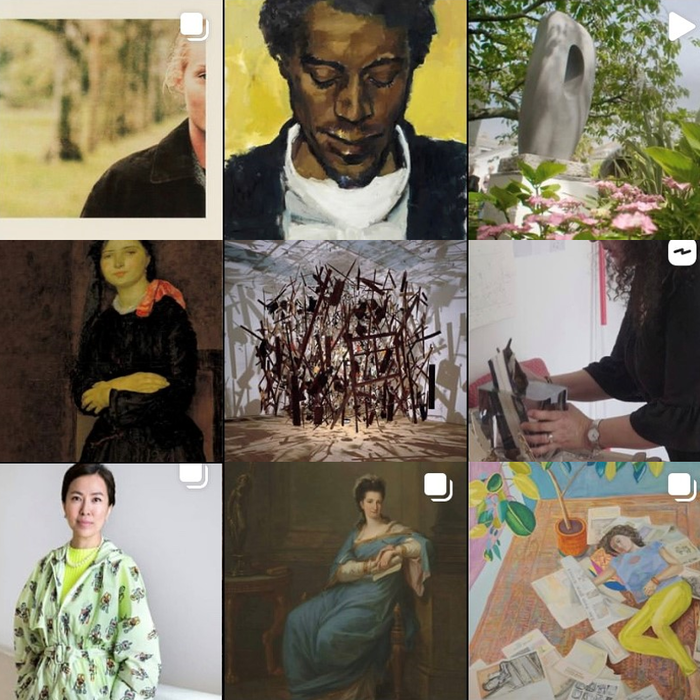We shouldn’t forget that art is personal
Missing the rest of her year abroad makes Rachel McHale reflect on the brilliant in-person experiences she had in Berlin’s galleries
Like many third-year language students I currently find myself at home, surrounded by the same four walls, wishing I was still abroad. This situation has led me to reminisce on the wonderful things I had the pleasure of doing whilst I was away.
Going to exhibitions was one of my favourite ways to spend weekends. Some of the exhibitions I went to in Berlin opened up new realms of experience and encouraged new ways of engaging with art. I spent three hours on my own in the exhibition centre Gropius Bau, amazed at how creative and stimulating the works of art and the curatorship were - I had honestly never seen anything like it. There were videos on the ceilings in some rooms, paintings hung at all levels, structural works of art through which to amble and an unsettling video displayed in a pitch-black room: it made for a highly immersive experience.
In response to the coronavirus crisis, galleries have admirably sought new ways to exhibit their works: one is publishing virtual tours of the exhibitions online. Tate Modern, Berlinische Galerie and L.A. Louver are only a few of many that have posted videos of their current exhibitions online. But how does viewing a virtual tour of an exhibition influence our perception of it and reaction to the works of art shown?
"Online exhibitions struggle to recreate the same level of engagement or multitude of reactions as in-the-flesh exhibitions"
Whilst online exhibitions expand the horizons of the art world and are undoubtedly more accessible, they struggle to recreate the same level of engagement or multitude of reactions as in-the-flesh exhibitions. The curatorship of exhibitions affects and influences how we engage with art; filming and publishing art online has a similar power. However, it is a lot more authoritative and prescriptive. Everyone watches the same video, hears the same person speak about the works of art, follows the same layout of the virtual tour. The length of time devoted to a piece of work conveys the importance that should be bestowed upon it and the focus appears to be on information. But isn’t one of the reasons we go to an art gallery to be personally affected by what we see?
I linger in front of works of art that make me feel something, I spend less time looking at the ones that don’t, I meander through the rooms or floors as I see fit, I read the accompanying descriptions if my curiosity calls for it, I don’t if I’m happy to leave it at my interpretation. Most importantly, I am present and an active agent in my own viewing of the exhibition.
The pause, rewind and fast forward buttons offer me some agency when watching these virtual tours. Yet ultimately, my viewing of this exhibition has been filtered through exactly the same lens as every other spectator’s. Of course, people will focus on different aspects and take different messages from it. But the physical act of making your way around a space provokes a sometimes intellectual, sometimes visceral, but most of all personal reaction. It’s an engagement with the exhibition and works of art on display that’s rarely replicated when watching a video from your bedroom.
And that’s not to mention that the best exhibitions I have been to appealed to the senses or involved active engagement. At the Gropius Bau exhibition titled Garten der irdischen Freuden (Garden of Earthly Delights), I had to put on funny-looking slippers in order to protect the floor constituting part of the art in one room, in another a potent smell of flowers filled the room. At the Get Together and Get Things Done exhibition at Manchester Art Gallery I was encouraged to write my own note to other viewers about the social change I wanted to see happen; these notes surrounded the works of art in the room and the exchange of ideas between a multitude of people who had passed through the exhibition at various moments was a fascinating engagement with the works of art which all highlighted the power of a crowd. Naturally, these experiences are difficult to recreate through a screen; senses cannot be reached and an exchange of ideas can only be virtual. The art has to make its effect through appearance and interpretation alone.
On the one hand, a dose of art and culture without leaving the home is much appreciated; on the other, a sense of the exhibition’s magnitude and the individuality of a visit to an art gallery are lost. Yet this is not to say that filming and publishing an exhibition online isn’t a commendable and worthwhile endeavour in the current circumstances; it absolutely is. But it also evokes the question: what is it that we go to galleries for? Hopefully, the next time we visit an art gallery, we’ll appreciate not only the wealth of information we are presented with, but also bask in the experience of being present and physically and personally engaging with the art on display.
 News / Cambridge academics stand out in King’s 2026 Honours List2 January 2026
News / Cambridge academics stand out in King’s 2026 Honours List2 January 2026 Interviews / You don’t need to peak at Cambridge, says Robin Harding31 December 2025
Interviews / You don’t need to peak at Cambridge, says Robin Harding31 December 2025 Comment / What happened to men at Cambridge?31 December 2025
Comment / What happened to men at Cambridge?31 December 2025 News / Varsity’s biggest stories of 202531 December 2025
News / Varsity’s biggest stories of 202531 December 2025 Features / “It’s a momentary expression of rage”: reforming democracy from Cambridge4 January 2026
Features / “It’s a momentary expression of rage”: reforming democracy from Cambridge4 January 2026










